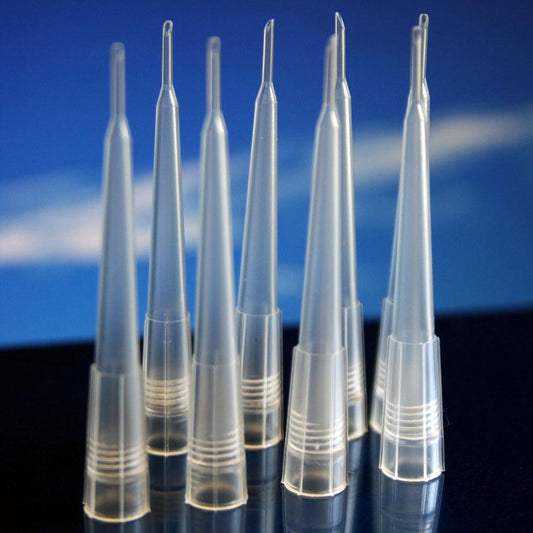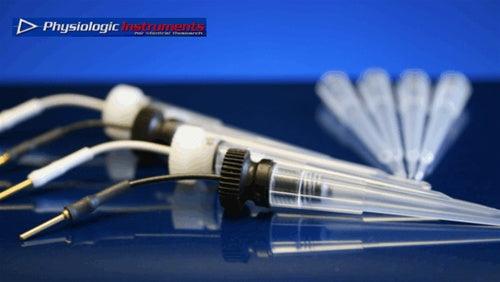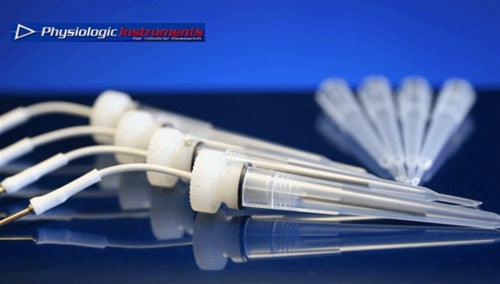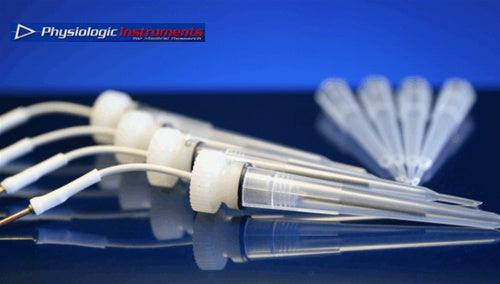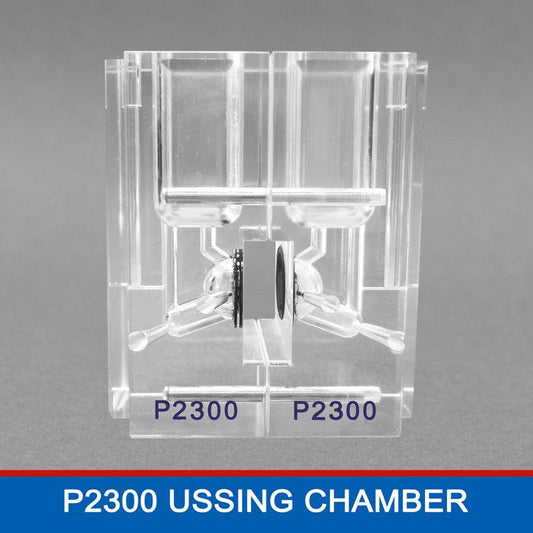Ussing Chamber Setup & Calibration: TEER, Isc, and CFTR Assay Basics (with Troubleshooting)
This guide outlines a complete, repeatable Ussing workflow—from assembling and calibrating your chamber to executing a canonical CFTR assay and calculating TEER and Isc with precision. Designed for epithelial transport researchers, this step-by-step reference helps minimize noise, improve reproducibility, and ensure consistent, publication-quality results.
What the Ussing Chamber Measures
- Potential Difference (PD): The transepithelial voltage (mV) across the tissue or monolayer.
- Short-Circuit Current (Isc): Net ion transport measured when PD is clamped to 0 mV.
- Transepithelial Electrical Resistance (TEER): Barrier integrity measured from the applied perturbation and resultant current (Ω·cm² after area normalization).
When assessing barrier function (tight junctions), focus on TEER. When evaluating ion channel or CFTR activity, prioritize Isc under voltage clamp control.
Setup And Calibration Checklist
- Chamber assembly: Inspect gaskets, O-rings, and aperture surfaces. Proper sealing ensures stable baselines. A modern Ussing chamber system like the EasyMount P2300 simplifies alignment and leak prevention.
- Solutions: Use freshly prepared, pH-balanced buffers. Pre-warm and maintain osmolarity across both sides.
- Electrodes & bridges: Condition Ag/AgCl electrodes and refill agar bridges (typically 3 M KCl). Air bubbles cause drift—remove them carefully.
- Zeroing & offset: With no tissue mounted, verify PD ≈ 0 mV. After mounting, clamp to 0 mV and confirm baseline stability before adding reagents.
- Leak & bubble check: Tap gently to dislodge bubbles; re-seat gaskets if instability persists.
- Acquisition & logging: Record at 2–10 Hz and annotate each reagent addition. Use data acquisition software to automate normalization and graph export.
Canonical CFTR Assay Sequence
For airway or intestinal epithelia, a typical pharmacological sequence is:
- Amiloride (apical): Inhibits ENaC — reduces Na⁺ absorption (decrease in Isc).
- Forskolin + IBMX: Elevates cAMP — activates CFTR (increase in Isc).
- CFTR(inh)-172: Blocks CFTR — confirms CFTR-specific current (Isc drops back).
Consistency is key: maintain reagent concentration, timing, and side of addition across experiments.
Calculations & Normalization
Isc Normalization
Isc,norm (µA/cm²) = Isc,raw (µA) ÷ Area (cm²)
Example: 18 µA across a 0.33 cm² aperture = 54.5 µA/cm².
TEER Conversion
TEER (Ω·cm²) = Rmeasured (Ω) × Area (cm²) − Rblank (Ω·cm²)
Always subtract the blank resistance from an insert without cells, recorded under identical conditions.
Choosing the Right Hardware
For reproducible results, pair a precision voltage/current clamp amplifier with a durable, easy-to-clean Ussing chamber system. Add data acquisition software to complete the workflow — enabling seamless event logging, area normalization, and data export for analysis.
Fast Troubleshooting Guide
| Symptom | Likely Cause | Recommended Fix |
|---|---|---|
| Drifting baseline / noisy PD | Unconditioned electrodes, bubbles, or dirty salt bridges | Recondition electrodes; refill bridges; purge air bubbles |
| Asymmetric currents | Unequal buffer osmolarity or electrode imbalance | Recheck buffer prep; confirm identical salt bridges |
| Weak Isc response | Low tissue viability or damaged monolayer | Reduce handling time; verify cell confluence; replace tissue |
| TEER values fluctuate | Temperature instability or chamber leak | Stabilize thermal conditions; confirm seal integrity |
| Flat response after Forskolin | Expired reagents or poor CFTR expression | Prepare fresh Forskolin/IBMX; verify culture conditions |
Tip: Always document solution composition, electrode history, and tissue source. These metadata drastically improve reproducibility when re-analyzing data months later.
Ready to standardize your Ussing runs? Explore the EasyMount Ussing Chamber and VCC MC8 Voltage Clamp for stable, repeatable epithelial transport data.
Recommended Equipment for This Research
| Equipment Category | Description | Link |
|---|---|---|
| Ussing Chamber Systems | Complete electrophysiology platforms for epithelial transport and barrier function studies. | Ussing Chamber Systems |
| Ussing Chambers (EasyMount & Classic) | Individual chambers for intestine, airway, renal, and custom tissues. | Ussing Chambers |
| Ussing Chamber Slider Inserts | Precision acrylic sliders for mounting tissues and replicating experimental geometries. | Ussing Chamber Slider Inserts |
| Voltage/Current Clamps (VCC MC8 Series) | Voltage clamp amplifiers for CFTR assays, TEER, and transepithelial measurements. | Voltage Clamps |
| Acquire & Analyze Software | Data acquisition and analysis software for epithelial electrophysiology experiments. | Acquire & Analyze |

